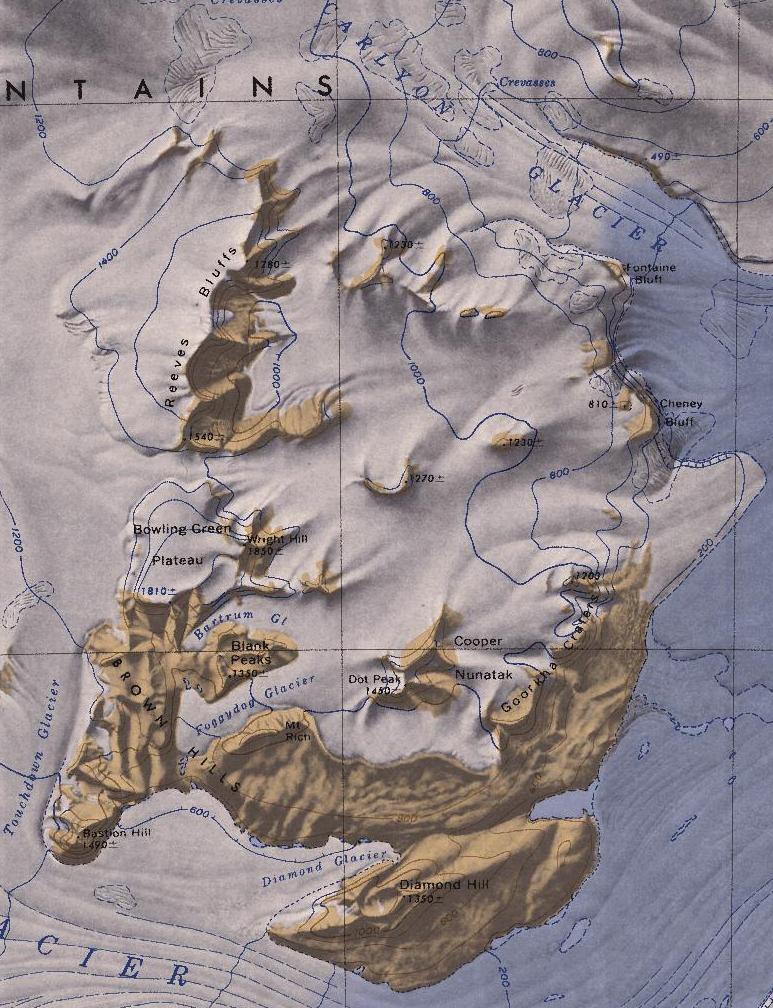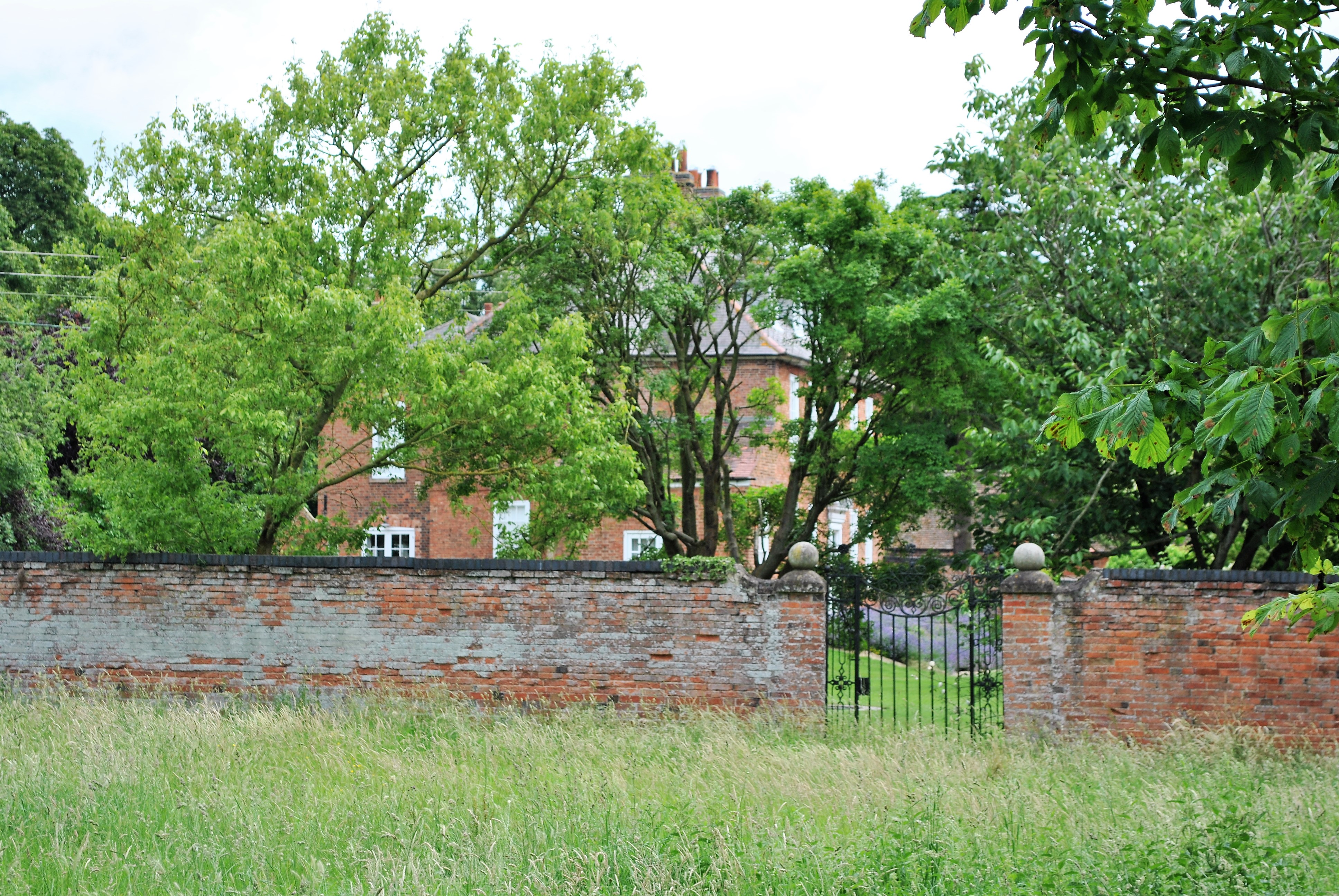|
Erewhon Basin
Erewhon Basin () is an extensive ice-free area in Antarctica. It forms a basin in the Brown Hills separating the snouts of Foggydog Glacier and Bartrum Glacier from the northern edge of the Darwin Glacier. It was explored by the Victoria University of Wellington Antarctic Expedition), 1962–63, and named from Samuel Butler's novel ''Erewhon ''Erewhon: or, Over the Range'' () is a novel by English writer Samuel Butler, first published anonymously in 1872, set in a fictional country discovered and explored by the protagonist. The book is a satire on Victorian society. The firs ...''. References Structural basins of Antarctica Landforms of Oates Land {{OatesLand-geo-stub ... [...More Info...] [...Related Items...] OR: [Wikipedia] [Google] [Baidu] |
Brown Hills
The Brown Hills () are a group of mainly snow-free hills in the Cook Mountains of Antarctica. Location The Brown Hills lie north of the lower reaches of Darwin Glacier. They are north of Diamond Hill and are adjacent to Diamond Glacier, a distributary of the Darwin Glacier. To the east they are bordered by the Ross Ice Shelf. On the west side, the Touchdown Glacier flows south to the Darwin Glacier between Roadend Nunatak and the Brown Hills. Reeves Bluffs are to the north of the hills. The hills were named for their color by the Darwin Glacier Party of the Commonwealth Trans-Antarctic Expedition (1956–58). Geology During glacial periods, Diamond Glacier would probably have flowed over the Brown Hills to the Ross Ice Shelf. Exposure ages of five glacial erratics from the Brown Hills range from 7,000 to 205,000 years ago, which implies that until 7,000 years ago the Brown Hills saddle was ice-covered. Simpson 2002 proposes that the Darwin calcic suite, a K-series, I-ty ... [...More Info...] [...Related Items...] OR: [Wikipedia] [Google] [Baidu] |
Foggydog Glacier
Foggydog Glacier is a glacier between the Blank Peaks and Mount Rich in the Brown Hills of Antarctica. It was mapped by the Victoria University of Wellington Antarctic Expedition (1962–63) and so named because in plan the glacier is shaped like the head and neck of a dog, with a moraine suggesting a collar and a glacial lake in the position of the ears. Fog accumulates regularly over the glacier. See also * Erewhon Basin * List of glaciers in the Antarctic * Glaciology Glaciology (; ) is the scientific study of glaciers, or more generally ice and natural phenomena that involve ice. Glaciology is an interdisciplinary Earth science that integrates geophysics, geology, physical geography, geomorphology, climato ... References External links 1964 photo of Foggydog Glacier Glaciers of Oates Land {{OatesLand-glacier-stub ... [...More Info...] [...Related Items...] OR: [Wikipedia] [Google] [Baidu] |
Bartrum Glacier
Bartrum Glacier () is a small steeply crevassed glacier in the Brown Hills, flowing west between Bowling Green Plateau and Blank Peaks. It was mapped by the Victoria University of Wellington Antarctic Expedition (1962–63), and named after J.A. Bartrum (1885–1949), Professor of Geology at the University of Auckland, New Zealand. See also * Erewhon Basin * List of glaciers in the Antarctic * Glaciology Glaciology (; ) is the scientific study of glaciers, or more generally ice and natural phenomena that involve ice. Glaciology is an interdisciplinary Earth science that integrates geophysics, geology, physical geography, geomorphology, climato ... References * Glaciers of Oates Land {{OatesLand-glacier-stub ... [...More Info...] [...Related Items...] OR: [Wikipedia] [Google] [Baidu] |
Darwin Glacier (Antarctica)
Darwin Glacier () is a large glacier in Antarctica. It flows from the polar plateau eastward between the Darwin Mountains and the Cook Mountains to the Ross Ice Shelf. The lower part of the glacier was mapped by the British National Antarctic Expedition, 1901–04, and the whole area traversed by New Zealand parties of the Commonwealth Trans-Antarctic Expedition (1956–58). The glacier was named in association with the Darwin Mountains (themselves named after Leonard Darwin). Robertson Buttress is the westernmost in a series of large rock buttresses on the south side of Darwin Glacier between Alley Glacier and Gaussiran Glacier. See also * Erewhon Basin * List of glaciers in the Antarctic * Glaciology * The Nozzle * Walker Cirque Walker Cirque () is a prominent glacier-filled cirque at the west side of the terminus of McCleary Glacier in Cook Mountains. The cirque opens to Darwin Glacier (Antarctica), Darwin Glacier near the head. Named after Carlton Walker, Facilities, Mai ... [...More Info...] [...Related Items...] OR: [Wikipedia] [Google] [Baidu] |
Victoria University Of Wellington Antarctic Expedition
The Antarctic Research Centre (ARC) is part of the School of Geography, Environment and Earth Sciences at Victoria University of Wellington. Its mission is to research "Antarctic climate history and processes, and their influence on the global climate system. The current director of the Antarctic Research Centre is Associate Professor Robert McKay. Directors * 1972 - 2007: Professor Peter Barrett * 2008 - 2016: Professor Tim Naish * 2017 - 2019: Professor Andrew Mackintosh * 2020 - Present: Professor Robert McKay History In December 1957, geology students Barrie McKelvey and Peter Webb along with biologist Ron Balham conducted an expedition to the then unexplored McMurdo Dry Valleys via the Royal New Zealand Navy Antarctic support ship HMNZS ''Endeavour''. This expedition formed the basic for the annual Victoria University of Wellington Antarctic Expeditions, which continue to the present day. Since this first expedition, over 400 staff and students have travelled to the ... [...More Info...] [...Related Items...] OR: [Wikipedia] [Google] [Baidu] |
Samuel Butler (novelist)
Samuel Butler (4 December 1835 – 18 June 1902) was an English novelist and critic, best known for the satirical utopian novel ''Erewhon'' (1872) and the semi-autobiographical novel ''Ernest Pontifex or The Way of All Flesh'', published posthumously in 1903 in an altered version titled ''The Way of All Flesh'', and published in 1964 as he wrote it. Both novels have remained in print since their initial publication. In other studies he examined Christian orthodoxy, evolutionary thought, and Italian art, and made prose translations of the ''Iliad'' and ''Odyssey'' that are still consulted. Early life Butler was born on 4 December 1835 at the rectory in the village of Langar, Nottinghamshire. His father was Rev. Thomas Butler, son of Dr. Samuel Butler, then headmaster of Shrewsbury School and later Bishop of Lichfield. Dr. Butler was the son of a tradesman and descended from a line of yeomen, but his scholarly aptitude being recognised at a young age, he had been sent to Rugby ... [...More Info...] [...Related Items...] OR: [Wikipedia] [Google] [Baidu] |
Erewhon
''Erewhon: or, Over the Range'' () is a novel by English writer Samuel Butler, first published anonymously in 1872, set in a fictional country discovered and explored by the protagonist. The book is a satire on Victorian society. The first few chapters of the novel dealing with the discovery of Erewhon are in fact based on Butler's own experiences in New Zealand, where, as a young man, he worked as a sheep farmer on Mesopotamia Station for about four years (1860–64), and explored parts of the interior of the South Island and wrote about in his ''A First Year in Canterbury Settlement'' (1863). The novel is one of the first to explore ideas of artificial intelligence, as influenced by Darwin's recently published ''On the Origin of Species'' (1859) and the machines developed out of the Industrial Revolution (late 18th to early 19th centuries). Specifically, it concerns itself, in the three-chapter "Book of the Machines", with the potentially dangerous ideas of machine con ... [...More Info...] [...Related Items...] OR: [Wikipedia] [Google] [Baidu] |
Structural Basins Of Antarctica
A structure is an arrangement and organization of interrelated elements in a material object or system, or the object or system so organized. Material structures include man-made objects such as buildings and machines and natural objects such as biological organisms, minerals and chemicals. Abstract structures include data structures in computer science and musical form. Types of structure include a hierarchy (a cascade of one-to-many relationships), a network featuring many-to-many links, or a lattice featuring connections between components that are neighbors in space. Load-bearing Buildings, aircraft, skeletons, anthills, beaver dams, bridges and salt domes are all examples of load-bearing structures. The results of construction are divided into buildings and non-building structures, and make up the infrastructure of a human society. Built structures are broadly divided by their varying design approaches and standards, into categories including building structures, archi ... [...More Info...] [...Related Items...] OR: [Wikipedia] [Google] [Baidu] |


